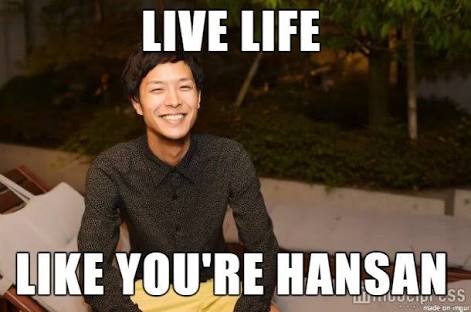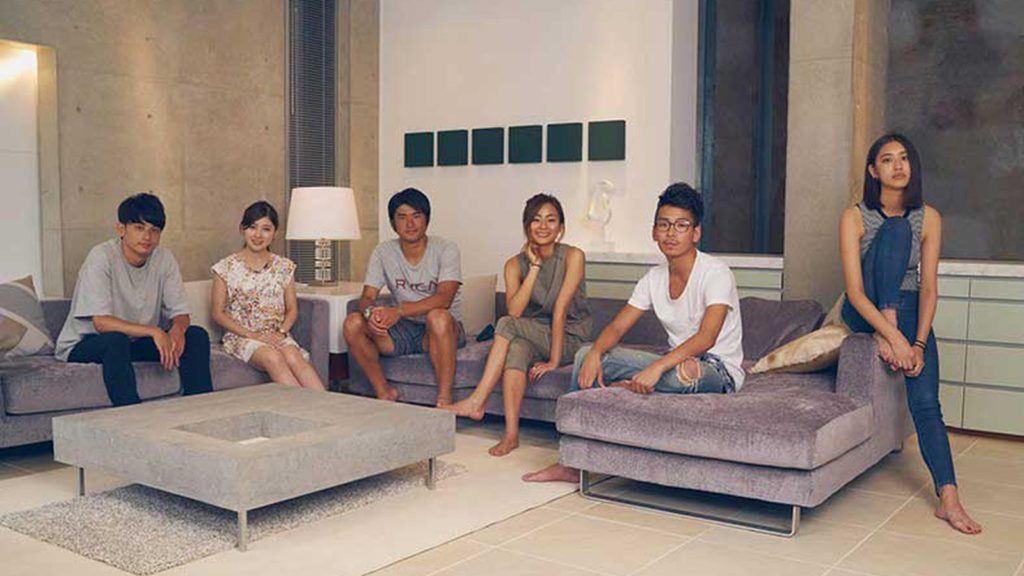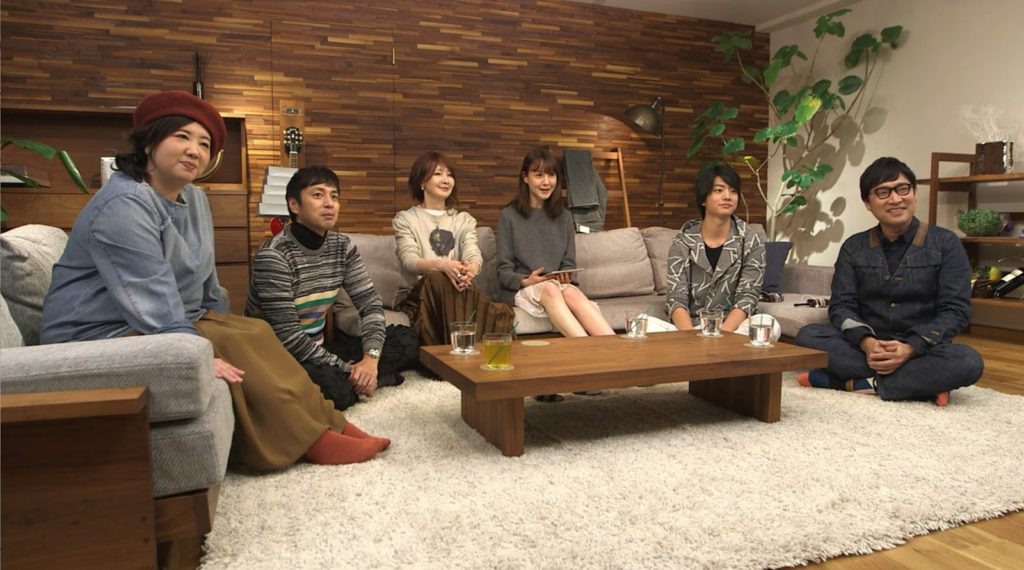Picture this portrait of Reality TV gold: Six strangers are picked to live in a house and have their lives taped. The accommodations are pristine, way more luxurious than any of them can afford, or hell, even deserve. The cast is hooked up with sick cars and an in-ground pool, and planted in a beautiful locale like Tokyo and Oahu. What comes next is GIF-worthy drunken fistfights and hella shade, right?
Wrong.
These Japanese twenty-somethings wash dishes and go grocery shopping. They spend a day at the beach. They act like polite, civil members of society and encourage each other to be their best. On paper, it sounds like something you’d only watch when you’re hungover or have insomnia. But truth be told, Netflix’s Terrace House is not only my favorite new show I’ve latched on to, it’s also the most addicting.
Japan’s international sleeper hit will not only tug at your heartstrings, it’ll make you fall in love with its cultural flair and snail-paced storytelling. The show, now a global phenomenon thanks to Netflix, just wrapped up its second iteration called Aloha State, which streamed in a whopping 190 countries. Some peg it as “the Japanese Real World,” but comparisons to MTV’s Reality Godfather couldn’t be more inaccurate—even if we dive back to the days of Pedro when The Real World was actually a groundbreaking docu-series. Rather, Terrace House celebrates the mundanity of life and all its quiet moments, from housemates politely respecting each other to relationships that gradually build through a series of subtleties. It asks us, “What if Reality TV was a little more…real?” I assure you there is no American equivalent.
The cast is young, mostly-Japanese (or Japanese speaking), and aged between 18-29. Three males and three females occupy the house at any given time, and when one chooses to leave, a replacement moves in. Unlike most American shows, Terrace House members are encouraged to live normal lives. They get humdrum part-time jobs, they continue pre-set career paths, they follow their dreams. The toxic, insular atmospheres created on shows like The Challenge and The Bachelor fuel drama by making its casts feel paranoid, under pressure, and restless. Here, the cast is encouraged to simply live, blossoming (or not) in his or her own professions. They do normal things like go out for dinner with friends and siblings (who, oddly enough, are simultaneously watching on TV as the season progresses), or have meet-ups with exes to discuss the future. They go surfing or head to the mountains for hikes. They inspire each other to work hard and reach goals. Their conflicts, even when tear-filled, are always resolved civilly with inside voices. There’s no table flipping, bitch-slapping, or glass-smashing (shocking, I know.) For Reality fans, it’s like stepping through a time warp into a bizarro-land where everyone is kind and supportive; the premise, so familiar, but shifted, foreign, different. Terrace House, in its essence, is a much-needed revitalization of a genre long past its prime.
Terrace House’s first series, Boys x Girls Next Door, aired on Japan’s Fuji Television from 2012-2014. The second, Boys & Girls in the City, became the first collaboration between Netflix and Fuji, and brought the series to TVs and devices all over the world. Thanks to its new reach, the show gives international viewers a slice of what life is like for Japanese youth, including the cultural and societal differences that come with it. In Boys x Girls In the City, the cast is mostly fully Japanese, and their first meetings are something to behold. They bow to each other, speaking softly and smiling nervously. They ask each other the same basic questions over and over. It’s awkward as hell, boring even. You’ll wonder what the hell you’re watching since they’re not skinny dipping in the pool by episode two. But that’s the beauty of the show. It feels far less manipulated than any of its contemporaries. There’s a sincerity involved that’s impossible to ignore. Producer manipulation feels almost vacant. We’ve grown so wary of trusting the “reality” of American productions, but with Terrace House, the culture and production aesthetic feels authentic and truer to life, like Reality TV and documentary style are finally reunited.
The casting is also unique and (dare I say) honest. We’ve seen dancers trying to make the pros like the tap dancing Yuki and the ballerina Momoka. There are clothing designers looking to make it in the fashion world, like hat designer Arisa, and Hawaii native Avian who launched her own swim line on the show. And then there was fan-favorite Yuto Handa, aka Han-san, an architect who taught all of his housemates about working hard and smashing goals. He mediated problems that arose in the house, putting out fires in between his busy schedule, and earning the love of his roommates and fans worldwide. When cast members leave Terrace House, it’s not because they punched a roommate in the face. It’s because they’re focusing on the next step of their creative or spiritual journeys. Goodbyes are tearful moments of gratitude and reflection on the present, especially in the case of someone like Han-San. Most of the time, the cast doesn’t really say “goodbye” to each other. Instead, they bow and say “thank you.”
When things do get hot and heavy, the action is kept off-screen; we only see the fall-out and discussion that happens as a result. Sex is never depicted, nor is any kind of heavy binge-drinking. Arman, an aspiring firefighter, tries his hand at skateboarding and gets hit by a car, and they still don’t show the footage. When he walks into the house all banged up and bandaged, his housemates, male and female, cry, and we feel how connected the group has become. The effect of an incident on the house’s relationships, platonic and otherwise, is Terrace House’s primary focus. How’s that for editing?
Among the long stretches of down time and cultural differences in production, there are always plotlines, like Arman’s accident, that beg for discussion. Enter a panel of Japanese celebrities and comedians who comment and poke fun at what we’ve seen. The panel is intergenerational ranging from teen to middle age, and the group is always ready to celebrate the small moments—like when a couple-to-be finally holds hands after half a season! Having the panel bust in mid-episode adds a whole new layer to the narrative, and once you start to learn the group’s dynamic, you feel like they’re friends sitting in your living room. Pay close attention to the verbal sparring between You, a 53-year-old singer, actress and model, and Ryota Yamasato, the dude with the stylish glasses. You will live for their commentary.
There are so many reasons to champion a show like Terrace House. It’s great to see authentic storytelling that’s not changing itself to mimic preset notions of Western ideals. Even as the series moved stateside to the shores of Oahu, it still felt Japanese, even among a mixed cast of half-Japanese houseguests and Americans. Had Netflix altered the show or tried to reboot it to fit what it thought its audience would want, it would’ve been a huge fail and sucked all of the charm out of it. Instead, we’re left with a show that will undeniably make your heart swell with feels. You’ll root for the cast in ways you never thought possible. Terrace House is a much needed reminder of how big the world is, and the importance of staying humble and focused. While on the surface, we’re bound to harp on our differences, but diving deeper and exploring our own humanities, we’re all just a bunch of hopefuls trying to chase the dream.




